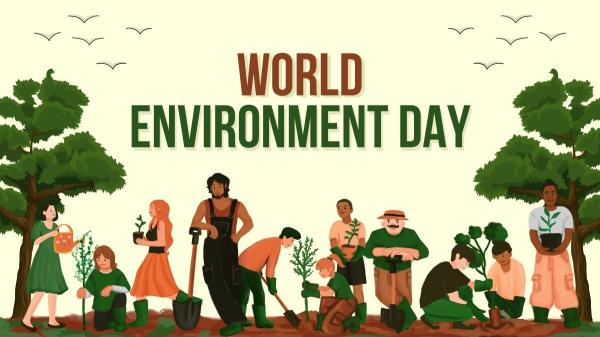
World Environment Day is an occasion that is dedicated to protecting and preserving the environment. It is celebrated annually on 5th June, as a global reminder of the responsibility to preserve, protect and restore ecosystems.
The United Nations General Assembly established this day in 1972. From that day, this occasion became a powerful instrument to raise awareness about critical environmental issues. Led by the United Nations Environment Programme (UNEP), and held annually, it has grown to be the largest global platform for environmental outreach. It is celebrated by millions of people across the world.
The theme set for World Environment Day 2024 is “Land Restoration Desertification and Drought Resilience” with the slogan “Our Land, Our future.”
The theme is to emphasise the urgency to protect the environment and put pressure on the direction to restore land and combat desertification. Also, building resilience against the drought is the main important thing due to the clean water availability issue. It is very crucial to put efforts in preserving biodiversity and natural habitats while restoring degraded ecosystems.
World Environment Day is very important from the perspective of addressing increasing environmental challenges. It is very crucial to conserve the environment and observe this event with the issues like climate change, deforestation, biodiversity loss and pollution which is becoming a major issue. If we can accomplish this goal to raise awareness regarding environmental issues, we will be able to transfer our environmental legacy to future generations.
By acting and raising awareness World Environment Day motivates people and the community to make a positive difference in this direction. This year’s theme highlights the importance of land Restoration which is the main pillar of the UN Decade on Ecosystem Restoration 2021 to 2030. According to the United Nations Environment Programme (UNEP), restoring degraded land can significantly improve livelihoods, reduce poverty, and build resilience to extreme weather. Every dollar invested in restoration can make up to $30 in ecosystem services, making it a vital strategy for sustainable development.
All over the world, ecosystems are threatened. From forests and drylands to farmlands and lakes, natural spaces on which humanity’s existence depends are reaching a tipping point. According to the UN Convention to Combat Desertification, up to 40 per cent of the planet’s land is degraded, directly affecting half of the world’s population. The number and duration of droughts has increased by 29 per cent since 2000 – without urgent action, droughts may affect over three-quarters of the world's population by 2050.
Land restoration is a key pillar of the UN Decade on Ecosystem Restoration (2021-2030), a rallying call for the protection and revival of ecosystems all around the world, which is critical to achieve the Sustainable Development Goals. This is why World Environment Day 2024 focuses on land restoration, halting desertification and building drought resilience under the slogan “Our land. Our future. We are #GenerationRestoration.”
2024 will mark the 30th anniversary of the UN Convention to Combat Desertification. The sixteenth session of the Conference of the Parties (COP 16) to the United Nations Convention to Combat Desertification (UNCCD) will be held in the Saudi capital, Riyadh, from 2 to 13 December 2024.
According to WHO Regional Director for South-East Asia, Saima Wazed, practical and innovative ways for the health sector to engage in land restoration, desertification, and drought resilience include:
• Integrating health impact assessments into land use planning processes. This can involve assessing the potential health impacts of proposed projects on air and water quality, food security, and exposure to hazards such as drought and desertification.
• Implementing green building practices and sustainable infrastructure in healthcare facilities, to reduce their environmental footprint and contribute to land restoration efforts. This can include incorporating green spaces into hospital designs to promote healing and well-being.
• Community-based health promotion, to empower communities taking ownership of land restoration and conservation initiatives through participatory health promotion programs.
• Build climate-resilient healthcare systems, to better withstand the impacts of climate change, including droughts and desertification. Train healthcare workers in climate adaptation and emergency response strategies.






















